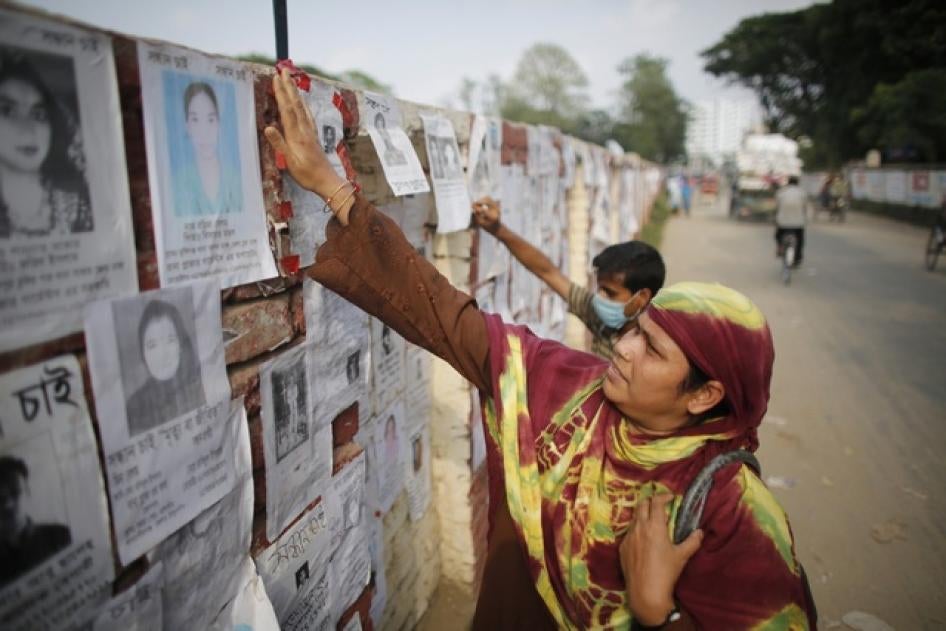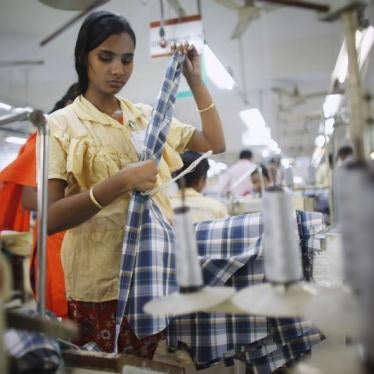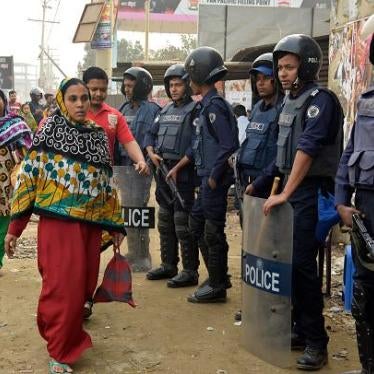Every year on April 24, I browse through a poignant online memorial for garment workers who died in 2013 in the Rana Plaza building collapse in Bangladesh. The website is a collection of national IDs, passport-size and other photos—a man posing with a phone, a woman against a backdrop of flowers, and appointment letters of workers. It’s a strong reminder of the human cost of negligence in the garment sector.
These garment workers died making the clothes we wear, and we as consumers owe it to their legacy to make sure the reforms enacted in their names are durable and effective.
Within five years of the building collapse, one of two large private fire and building safety initiatives in Bangladesh—the Alliance on Bangladesh Worker Safety (Alliance), a safety effort mostly led by North American brands—announced that it is preparing to wrap up and hand over operations to an “independent, credible, locally-led organization,” developed in partnership with the Bangladesh government and the Bangladesh Garment Manufacturers and Exporters Association (BGMEA).
The other private initiative—the Bangladesh Accord on Fire and Building Safety (Accord), led mostly by European brands has extended its work till 2021, saying its operations would continue “beyond May 2018 as all parties recognize, substantial additional capacity-building is necessary before responsibility to protect workers in factories producing for Accord signatory brands can be responsibly handed over to a national regulatory body.” The extended Accord includes small yet concrete improvements that give protections for workers’ freedom of association more teeth.
These two initiatives, both led by reputed brands, came to very different conclusions about what has changed in the past five years, which raises the question—why?
Could it be that having workers centrally involved in designing and contributing to the administration of an initiative offers a worker perspective that can better inform decisions about whether to “transition” or stay? To be clear—workers are not just “any” stakeholder in such decisions. They stand on a different footing from other “stakeholders” because they risk paying with their lives and limb.
Worker participation in such initiatives should not be a box checking exercise. When it comes to initiatives that can save workers from dying, participation within an enforceable framework agreement—as is the case with the Accord—allows worker representatives to negotiate protection until they are satisfied that the outcomes contain meaningful procedures to enhance workplace safety.
Brands pinning their hopes on a “quick transition” should be realistic. The Bangladesh government has created a committee to periodically assess whether the stage for “transitioning” from the Accord has been set. In the interim, joining the Accord offers the best available worker protection program.
First, the Bangladesh government has not shown the kind of “measurable progress” that would demonstrate that locally led initiatives developed in partnership with the government are capable of assuring factory safety.
In May 2017 Bangladesh authorities set up the Remediation Coordination Cell to oversee progress on fire and building safety in garment factories not covered by the Accord and Alliance. Data reported in February 2018 shows that only 3 percent of the 754 government-inspected factories corrected all fire and building safety concerns; less than 15 percent of factories implemented half the fixes needed to make factories safe. To date, the Bangladesh government’s public reporting on progress has been dismal, falling far short of the kind of transparency adopted by the Accord and Alliance, which not just claimed progress, but reported hard facts.
Last year, I tried to find out what happened to factories that were terminated from the Accord or the Alliance. What steps did the government take to make these factories safe or shut them down? Where were the workers? How did they cope when factories shut down and workers lost their jobs?
After speaking to workers from a handful of factories that were terminated from the Accord for being repeat defaulters, we discovered that most workers continued working in extremely unsafe factories. They did not know where or how to look for another job in a safer factory. Moreover, the Bangladesh government did not appear to be temporarily suspending these factories’ operations—let alone closing them down.
A March 2018 digital database launched by the Bangladesh government continues to show as “registered” a number of factories terminated from the Accord or Alliance for failing to make progress on fire and building safety without making clear what this means—were these factories made safe—and if so, from what date? Most recently, government authorities even got called out by the UN Committee on Economic, Social and Cultural Rights for their ongoing failures on fire and building safety.
Brand representatives should look for transparent and detailed reporting by local authorities regarding measures taken to remediate or shut down unsafe factories, including those terminated from the Accord and Alliance. Until now, there has been no such information. Such reporting would indicate the preparedness of the Bangladesh government to adopt and replicate one of the strongest features of the Alliance and the Accord—transparent and periodic reporting of progress—an important check against backsliding and corruption.
Second, a credible complaints process is one of the most important value-added of the private initiatives. The track record of the Bangladesh government when it comes to complaints resolution is especially poor—and brands should be looking more closely at not just numbers but how these complaints are resolved. In the past, the International Labor Organization has repeatedly criticized the Bangladesh authorities’ dismal record of resolving complaints concerning unfair labor practices by factories.
Similarly, watching how the Bangladesh government and industry respect factory unions and facilitate mature industry relations is an important indicator of whether transition can work. The Bangladesh government’s approach to industrial relations needs to fundamentally shift course. There are key indicators to assess this course correction. Its medieval and brutal tactics of forcibly disappearing workers and union organizers, or arresting journalists who simply write about labor rights needs to end.
In 2012, a union organizer from the Bangladesh Center for Worker Solidarity named Aminul Islam disappeared. Days later, his dead body surfaced. It was widely believed that Bangladesh’s security forces were involved in his abduction and murder. But security forces responsible were never held accountable and only a former garment worker who was last known to have called Aminul Islam away from his office before he disappeared was convicted earlier this month.
Similarly, in December 2016, brands threatened to boycott an apparel industry event in Dhaka to get the Bangladesh government to back down from its arbitrary arrests and false criminal cases against union organizers and labor activists following the Ashulia wage protests in the outskirts of Dhaka.
Brands that are serious about transitioning to a credible locally-led system will watch closely how well their supplier factories respect and promote freedom of association, and whether the Bangladesh government abandons its course of misusing criminal laws to muzzle union organizers and leaders.
Third, while the Accord is a much-needed human rights risk prevention, mitigation, and remediation program for workers, it also affords legal risk mitigation for apparel companies who are sourcing from Bangladesh with its credible inspections, monitoring and complaints mechanism for workers, and transparent reporting of progress. According to early April data, 140 apparel companies from amongst the more than 220 original signatories signed the extended Accord, covering 1332 factories.
Finally, companies can show the world that by signing up to the Accord, they value worker lives after the Rana Plaza calamity.
There is no better way to mark this tragic anniversary.










